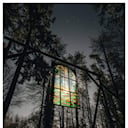Which country conducted the first recognised and recorded national census?
Apparently the Icelandic census of 1703 was the first census of Iceland and the first complete census of any country.
The census recorded the name, age, residence, and social standing of every inhabitant; it was the first such complete census. Those without fixed address were recorded under the place where they spent the night before Easter that year.
The census was assembled and organized by two Icelanders, Árni Magnússon, who had just been appointed a professor at the University of Copenhagen, and Páll Vídalín, sheriff and vice-lawman.
They were commissioned in 1702 by King Frederick IV of Denmark to perform a complete survey of Iceland, then a Danish possession, in order to inventory its economic resources and propose improvements; this included the census as well as the Jarðabók or land register. The royal commission, dated 22nd of May 1702, listed the census in its Paragraph 8 and also required a count of livestock.
Subsequent more recent research has revealed that the census is almost completely accurate; only 497 people are registered twice, and only one commune is missing, as later studies have shown some small omissions, for example the island of Viðey in Kollafjörður Bay, which definitely had residents at the time. It is also suspected that some young children were omitted, although it is conceivable that the lack of children under 8 is due to 'difficult years' preceding the taking of the census.
More Info:
en.wikipedia.org







